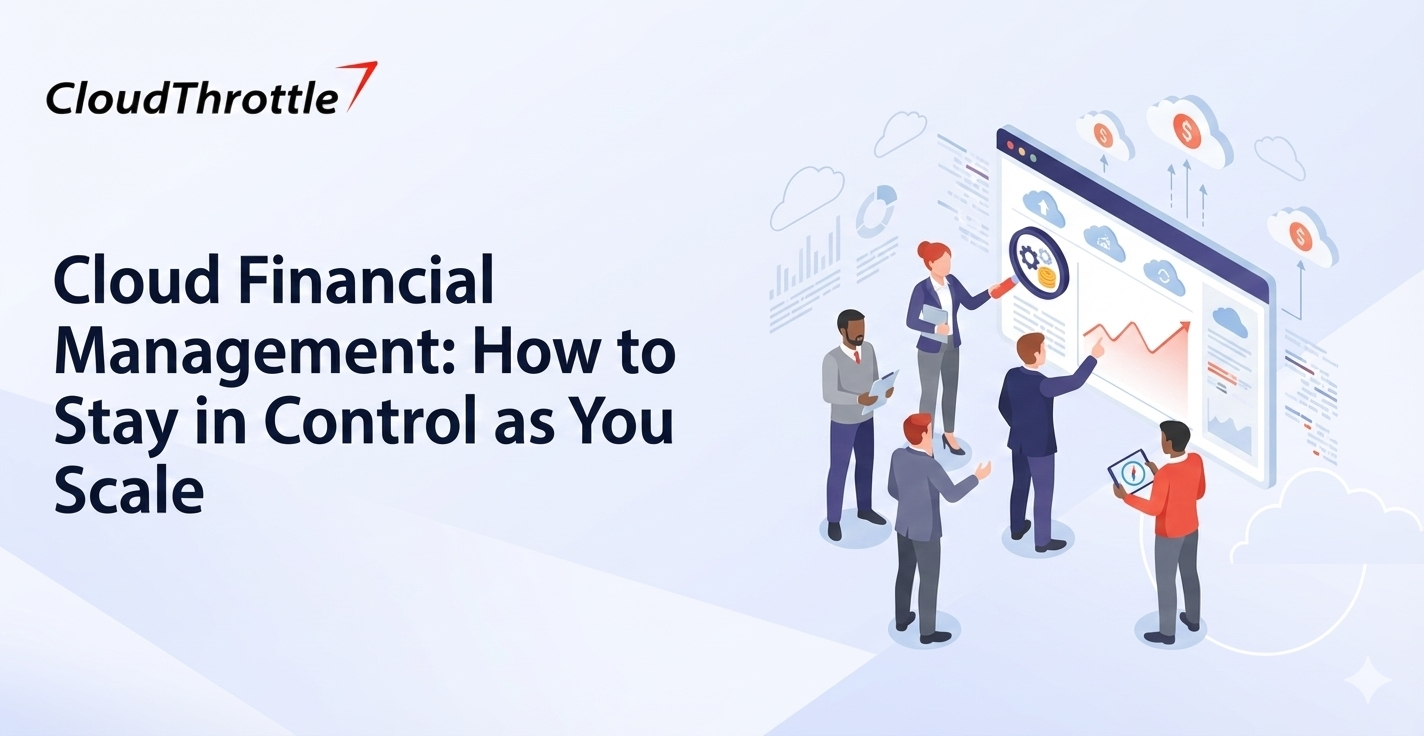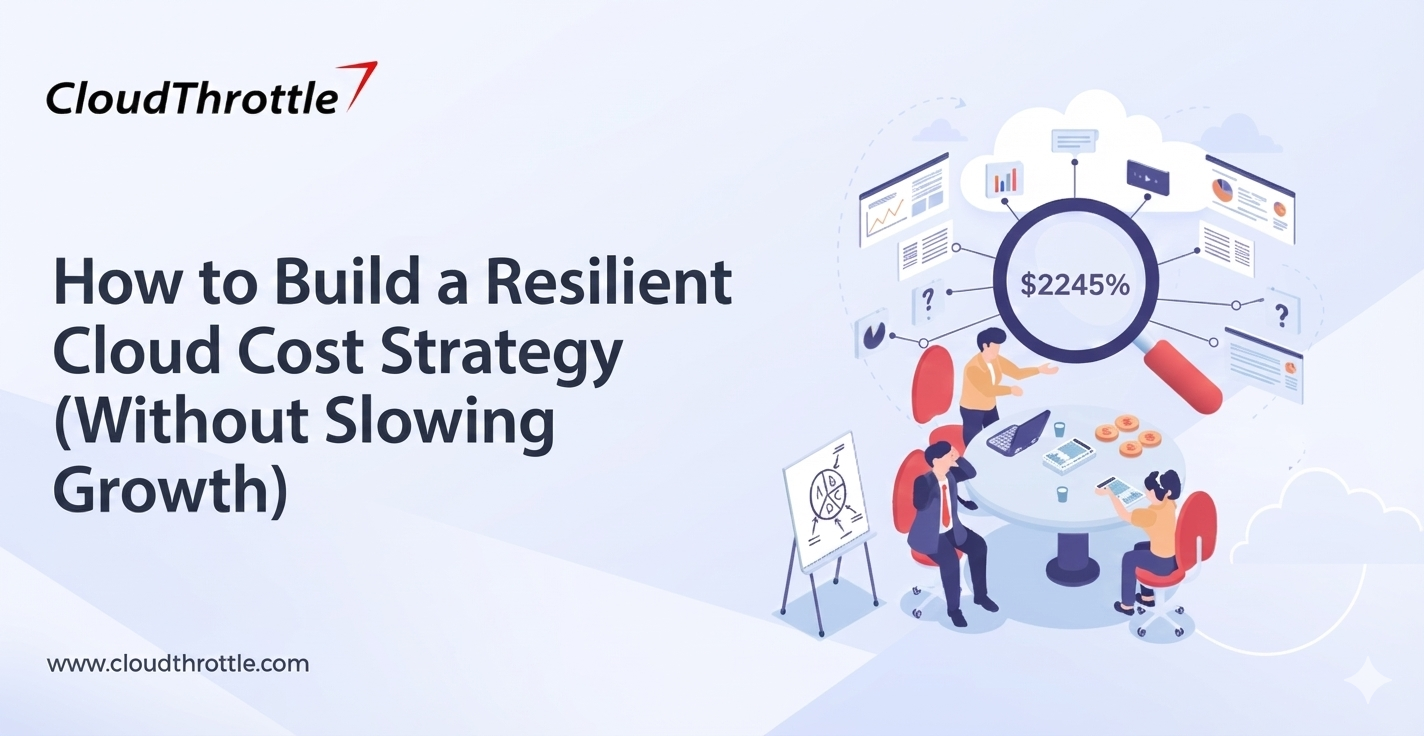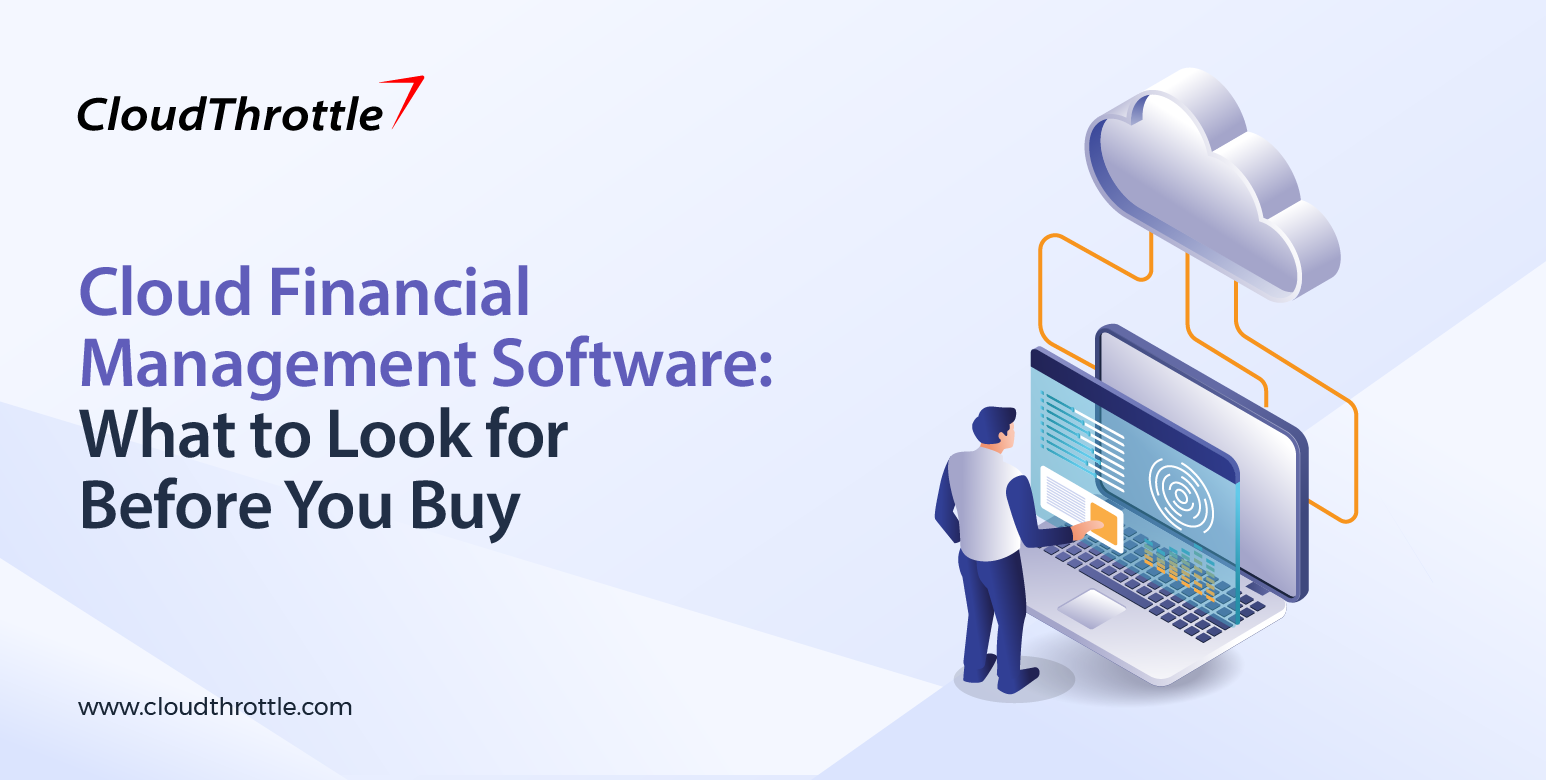Unlocking Cloud Cost Optimization: Strategies for Effective Budget Management
Managing cloud costs efficiently is essential for businesses striving to optimize their resources and maximize returns on investment. While basic tools provide a high-level view of spending, they often lack the capability to provide granular cost insights. Let's explore a range of strategies and best practices to enable organizations to gain granular cost insights, implement effective cloud cost optimization measures, and align cloud costs with key business activities. From leveraging advanced tools like CloudThrottle to setting boundaries and automating resource schedulers, these strategies will help you unlock the full potential of cloud cost optimization.
- Harness Advanced Tools for Granular Insights: In the dynamic realm of cloud computing, managing costs is paramount. Advanced tools offer deep insights by tagging, analyzing resources, and predicting spending. Custom reporting, automation, and optimization recommendations enhance decision-making. Gain financial control and agility through these tools, ensuring your cloud investments align with goals. Advanced cloud cost management tools offer:
- ~Cost Allocation Tags: Assign metadata tags to resources, enabling precise spending categorization by project, department, or team. This granularity aids cost attribution and highlights major cloud expenses.
- ~Resource-Level Insights: Unlike traditional monitoring, these tools reveal individual resource usage and costs. Identify underutilized resources for cloud cost optimization and substantial savings.
- ~Forecasting and Predictive Analytics: Leverage historical data for predictive models estimating future cloud expenses. Proactively plan and budget, avoiding unexpected cost spikes.
- ~Anomaly Detection: Algorithms spot unusual spending patterns, allowing swift corrective action to prevent financial concerns.
- ~Customized Reporting and Dashboards: Tailor reports and dashboards for relevant cost metrics and insights, enhancing cross-team cost awareness.
- ~Recommendations and Optimization: Analyze cloud usage with machine learning, providing actionable optimization suggestions, such as reserved instances or rightsizing.
Basic cloud native cost management tools like AWS Cost Explorer and AWS Cost and Usage Report can only provide a limited understanding of your cloud spending. We need to drill down into usage data to gain granular cost insights into billing data. Powerful reporting frameworks like CloudThrottle's Cloud-Cost-Modeler, which uses Cloud native resources, provide in-depth analysis and reporting capabilities, allowing you to dive deep into specific cost categories, services, or periods. It offers a range of features and capabilities designed to provide insights into AWS spending patterns, identify cloud cost optimization opportunities, and create cost reports for better financial management. Cloud-Cost-Modeler is a one-time setup that uses Cloud native Tools and resources. The cost of these implementations is very negligible compared to any third-party tool available in the market.
- Address Budget Leakage: Discovering that your cloud budget leaks thousands of dollars weekly can be alarming. To address this issue, thoroughly evaluate your cost breakdown to identify the root causes of overspending. This analysis will help you pinpoint inefficiencies, eliminate wasteful spending, and implement targeted cloud cost optimization measures to prevent further budgetary drains.
- Optimize SoftwareTesting Project Costs: Software testing projects often have significant costs, especially when resources are provisioned over a specific period. To optimize testing project costs, assess your testing requirements and explore options for resource optimization. Consider leveraging cost-effective testing environments, automating test processes, and utilizing spot resources. By optimizing your testing infrastructure, you can reduce costs without compromising the quality of your software.
- Establish a Cloud Cost Intelligence Approach: Linking cloud costs to key business activities is crucial for effective cloud cost optimization. By adopting a deep drive approach, you can gain visibility into how specific activities drive costs within your organization. Establish clear cost allocation mechanisms that assign costs to projects, departments, or business units. This linkage will help you make informed decisions, prioritize cost optimization efforts, and align cloud costs with strategic business objectives. CloudThrottle provides detailed mapping of these products to account & resource levels.
- Set Boundaries to Prevent Costly Surprises: The dynamic nature of the cloud, coupled with its auto-scaling capabilities, can quickly lead to budget overages if not adequately managed. To prevent such surprises, set clear boundaries on scaling parameters, such as maximum instance counts or spending thresholds. By establishing these limits, you can effectively control costs and avoid unexpected budget overruns.
- Implement Cloud Cost Optimization Best Practices: Adopting cloud cost optimization best practices is vital for long-term cost efficiency. Regularly review and optimize resource utilization, leverage cost-effective instance types, and explore options for optimizing storage. Additionally, consider adopting cost-effective architectural patterns like serverless computing or containerization to drive further cost savings. Following these best practices can extract maximum value from your cloud investments.
- Enhance Visibility and Proactive Cost Monitoring: Visibility and proactive monitoring are essential for effective cloud cost optimization. Utilize cloud cost management tools like Cloud-Cost-Modeller to gain comprehensive visibility into your cloud costs and usage. Implement cloud cost monitoring best practices, such as setting up cost alerts and utilizing anomaly detection mechanisms. By analyzing your cloud usage billing data in the context of specific business activities, you can identify potential cost savings, optimize resource utilization, and proactively address cost anomalies.
- Identify Areas of Cloud Waste: Identifying the most significant areas of cloud waste is crucial for cloud cost optimization. Conduct regular assessments to identify unused or underutilized resources, excessive data storage, or inefficient configurations. By pinpointing areas of waste, you can take appropriate actions such as rightsizing resources, optimizing storage, or eliminating redundant services, resulting in substantial cost savings. Automating policies to shut down workloads after hours eliminates idle instances and reduces unnecessary costs. By setting up automated processes that identify and shut down idle workloads during non-business hours, you can significantly optimize resource utilization by up to 60% of savings in some environments and achieve cost savings without sacrificing performance or availability. Utilizing an advanced tool like CloudThrottle, you can schedule resources across multiple accounts on a unified console to meet your Service level agreements (SLAs).
- Improve Cloud Financial Governance with Tags: Tags are a valuable tool for improving cloud financial governance. By assigning tags to resources based on project, department, or other relevant criteria, you can gain better visibility into cost allocation and optimize resource utilization. Tags provide granular insights into how costs are distributed across different aspects of your business, enabling you to make informed decisions and take targeted cloud cost optimization measures. CloudThrottle, for example, doesn't depend on fully Cloud-native tags to provide cloud cost monitoring and cost optimization across the project.
Effectively managing cloud costs requires a comprehensive approach beyond essential tools and incorporating advanced techniques for granular insights. Organizations can unlock the full potential of cloud cost optimization by leveraging tools like CloudThrottle, addressing cloud budget leakage, optimizing software testing project costs, implementing a cloud cost intelligence approach, setting boundaries, and following best practices. Enhanced visibility, proactive cost monitoring, waste identification, policy automation, and improved financial governance through tags strengthen cloud cost optimization efforts. By implementing these strategies, businesses can achieve optimal cost efficiency, maximize returns on their cloud investments, and drive overall success in their digital transformation journey.
















